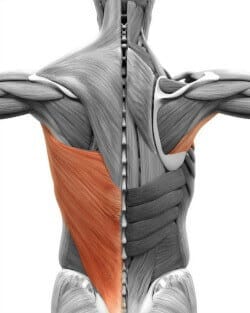

By: Shane Piccolo
Fitness Education and Training for Addiction Recovery
Focus Muscle Groups: Latissimus Dorsi (Lats) and Teres Major
When I heard about the Facebook page Lakeview Health Wellness Center was creating, I knew I wanted to bring something different than the typical fitness page offers. I wanted to help our alumni, staff, and followers learn how to train smarter. In order to do so, I thought best to educate the audience on muscle anatomy and how each muscle works on the skeletal system. Furthermore, I know when some of our patients leave us, they may not have access to every piece of equipment, or a gym at all. In order to help those without access, I wanted to provide an exercise guide to target each muscle using barbells, machines, dumbbells, cables, bands, and body weight only. Our followers’ health and well-being are top priority, and not having access to a gym should not prevent training of specific muscles. Over the next few months, videos will be posted in regard to muscle anatomy, muscle actions, and exercises to perform for specific muscle groups. Every day in the Wellness Center, our staff receives questions in regard to correct form and exercise recommendations to target the specific muscle group a patient is trying to train. The Muscle Monday series will be educational and focus on foundational movements that can be performed safely without supervision. The exercises performed will vary depending on the type of equipment that may or may not be available from person to person. In some cases, a specific piece of equipment may not have a certain exercise for the designated muscle, so alternatives will be offered. With that, let’s get started with week one – lats and teres major. For the first installment of Muscle Mondays, we will focus on the joint effort by the latissimus dorsi and the teres major. The latissimus dorsi, more commonly referred to as the “lats,” are large muscles on each side of the spine. They span from the origin at the ilium and sacrum, along the lumbar and thoracic spine and to the insertion at the intertubercular groove on the humerus. In other words, the muscle begins at the pelvis and lower to mid spine, and reaches across the torso to attach on the upper arm. This large muscle acts on the shoulder joint and scapulae by allowing adduction, internal rotation, and extension. Any actions requiring the arm to come together toward the lower back is performed by the lats. To assist in these movements, the teres major begins at the inferior angle, or bottom of the scapula and inserts at the proximal humerus, near the attachment point of the lats. This small muscle allows the shoulder to internally rotate, extend and adduct. As with most synergists, the teres major is an important muscle in order to achieve maximum potential for the latissimus dorsi. When planning an exercise program for the back, the latissimus dorsi is the starting point. This muscle is the primary pull muscle, and should be targeted as such. The teres major will be activated in most movements performed for the lats, including the lat pull down, band pullovers and body weight pull ups. Follow up with the video below for demonstrations and explanations for training these muscles.
You can stay in the know with all of the wellness team’s expert guidance on the Lakeview Health Wellness Center Facebook page.





